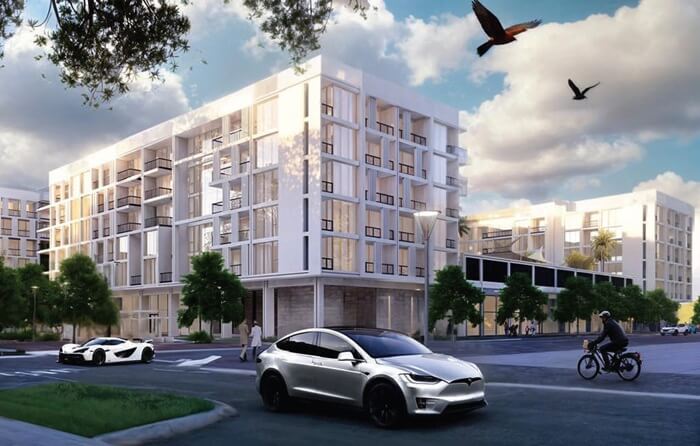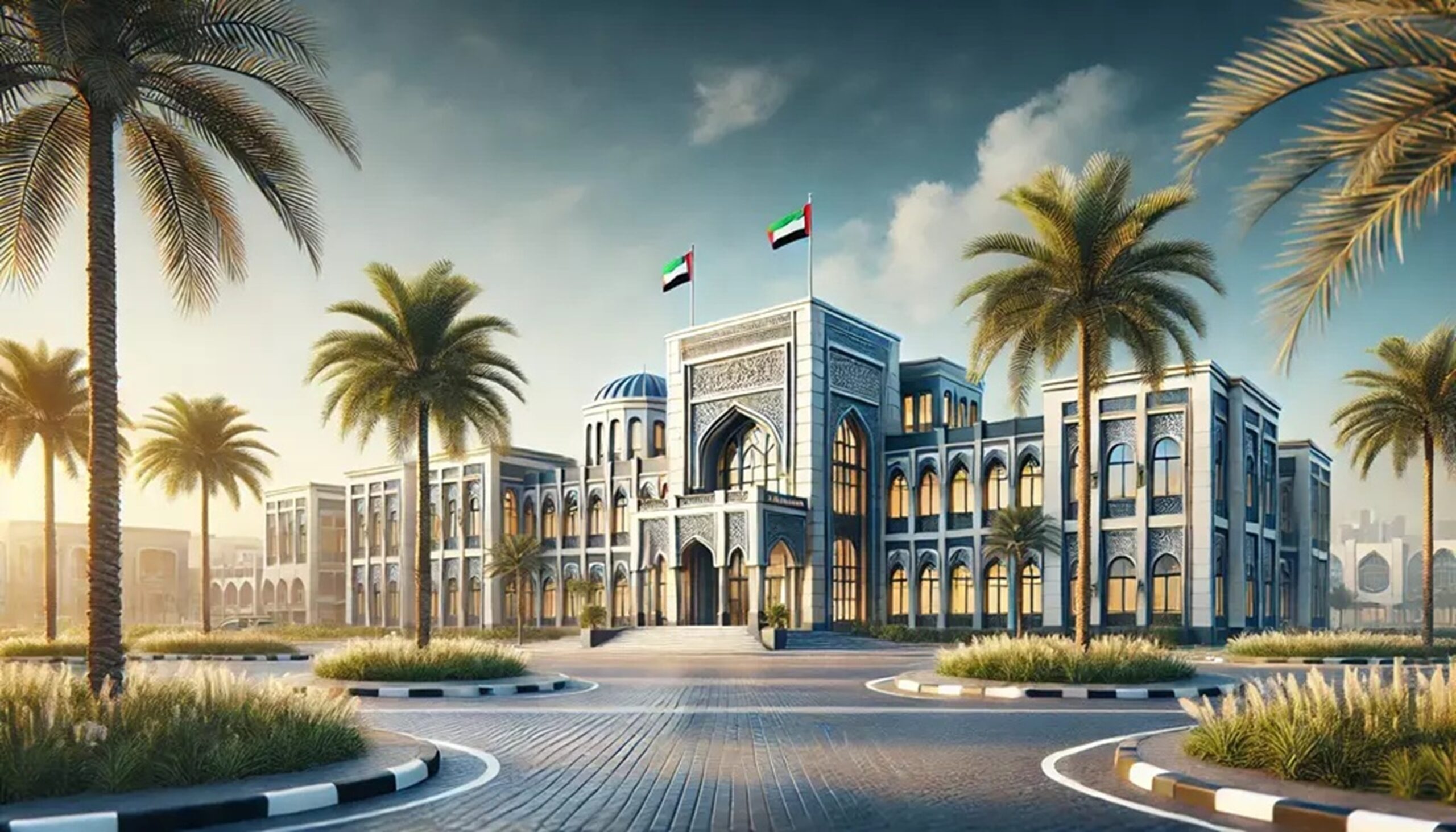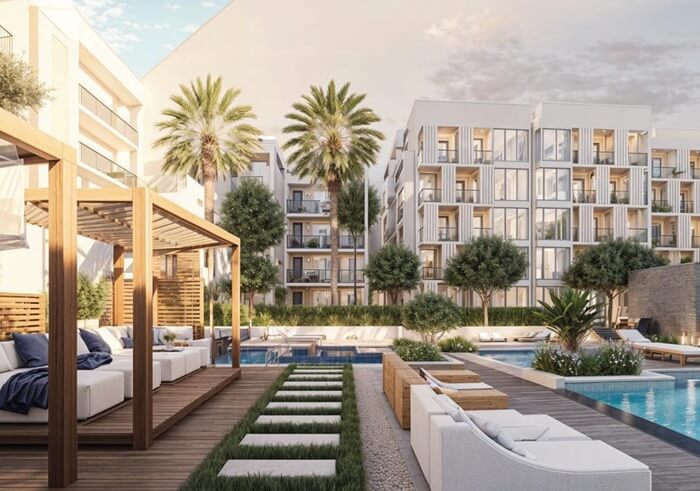Oman has traveled a path from tradition to modernity in recent decades, and extensive changes are being seen in the culture of its people. The country, which had limited educational and infrastructure facilities before 1970 (only three schools in the entire country), witnessed the “Oman Renaissance” with the beginning of the reign of Sultan Qaboos. During this period, extensive investment was made in education, health, and urban development, and the traditional Omani society gradually opened up to the achievements of the modern world. Today, the population of Oman is estimated at about 5 million, and a large part of the people live in cities. Despite the introduction of modern tools and values, Omani culture is still rooted in Islamic and tribal traditions. Oman’s social atmosphere is more flexible and moderate than some of its conservative neighbors, and the government has tried to promote development while preserving cultural identity.

Urban Life in Oman
Urbanization in Oman has been rapid over the past few decades. Today, nearly 85% of the country’s population lives in urban areas. Muscat, the capital and largest city of Oman, is the main center of economic, political, and cultural activity. Muscat itself has a population of about 800,000, and with the surrounding area, more than a million people live in the Muscat metropolitan area. Other major cities in Oman include Salalah (the capital of Dhofar Governorate in the south), Seeb, Sohar, Nizwa, and Sur, each of which has become regional population centers.
Urban life in Oman is a blend of modernity and tradition. On the one hand, Omani cities have modern infrastructure such as highways, modern shopping malls, hospitals and universities. On the other hand, the architecture and urban fabric have tried to preserve the traditional Omani style; so that many new buildings are inspired by elements of local Islamic architecture and use white facades and traditional domes and arches. The result of this policy is that the atmosphere of Omani cities, while being contemporary, also has a historical and authentic atmosphere. For example, in Muscat, high-rise buildings are limited and most of the buildings are low-rise and have a traditional design so that the general landscape of the city remains in harmony with the old forts and mountains in the background.
One of the manifestations of Omani urban life is the traditional markets or souqs, which are still thriving. The famous market in Muscat is one of the oldest markets in Oman, with a history of several hundred years. This covered market, with its narrow corridors and traditional architecture, is a place to sell handicrafts, colorful fabrics, perfumes, incense and traditional Omani jewelry. In recent years, the Muscat Municipality has renovated and equipped this market to preserve the old style while providing modern facilities such as lighting and ventilation for the comfort of shoppers. The presence of foreign tourists and Omani citizens in these markets indicates the continuation of traditional cultural life in the heart of modern Omani cities.
Media and communications in a modern context
In the area of media and communications, Oman experiences a mixture of state control and the spread of new technologies. In terms of infrastructure, the Omani government has invested heavily in the development of telecommunications networks over the past decade. High-speed internet access has been extended to almost all areas, and by early 2024, about 98% of the Omani population was using the internet. The number of social media users is also increasing, with more than 84% of people actively using networks such as Twitter, Instagram, etc. Mobile phone penetration is also very high; in 2024, more than 150% of the population (about 7 million phone lines) had an active mobile subscription, indicating that many people own more than one phone or SIM card. This statistic reflects a society that is rapidly becoming digital.
In terms of mass media, Oman has several major newspapers and television networks (both state-owned and private). Although the Omani constitution guarantees freedom of speech and the press, in practice there are significant legal restrictions on the media. Outright criticism of the Sultan and the ruling family is prohibited, and the media often practice a form of self-censorship. Private media outlets also typically rely on government support to continue operating and do not cross political red lines. According to Reporters Without Borders, Oman ranked 137th in the 2024 World Press Freedom Index, an improvement of 18 places from the previous year, but still indicating a relatively closed media environment. The government has broad powers to shut down publications, block websites, and prosecute journalists for violating the law, and has sometimes used these powers. However, digital media and social media have created a new arena for the expression of opinions among Omani youth, although users remain cautious in this space.
Overall, Oman’s communications system is technologically advanced, and most people have access to modern communication tools. The government is also implementing plans for e-government and the digital economy as part of its “Oman Vision 2040.” For example, in the 2022 municipal council elections, online voting was enabled through a special app called “Enteb”, which demonstrates the government’s willingness to use technology in the administration of the country. Thus, Omanis are enjoying the benefits of digital communications in their daily lives, although the official media landscape remains politically conservative.

Educational and higher education system
One of the main pillars of Oman’s modernization has been the transformation of its education system. As noted, Oman was virtually devoid of significant schools and academic centers in the 1970s. With the dawn of the new era, the government rapidly began building primary and secondary schools across the country and providing free public education up to the end of secondary school. The results of these efforts have been impressive; in just a few decades, the literacy rate has risen from around 55% in 1990 to over 93% in recent years. Illiteracy among Omani women, which was over 85% in 1970, has fallen to around 5% by 2020, indicating the success of the country’s extensive literacy program.
Today, almost all Omani children have access to school and complete primary and secondary education. Sultan Qaboos University (founded in 1986 in Muscat) was Oman’s first national university, where thousands of students now study in various fields. In addition, dozens of other private and public colleges and universities have been established or expanded in recent years. The Omani government has not hesitated to send students abroad to train specialized human resources, and many young Omanis have studied in other countries (Arab countries in the region, Europe, and the United States) on government scholarships.
Gender equality in education is a prominent feature of modern Oman. Unlike in the past, when girls had less access to school, women’s participation in all levels of education is now close to or even higher than that of men. According to statistics, more than half of Omani university students are women. This is the result of policies encouraging girls’ education and the establishment of girls’ schools since the 1970s. The Omani government also paved the way for the advancement of women’s education, who were deprived of formal education in the decades preceding the wave of development, by establishing adult literacy centers.
In addition to quantity, improving the quality of education is also a priority for Omani authorities. In recent years, curriculum reforms have been implemented to equip graduates with skills that are relevant to the needs of the modern labor market. Emphasis has been placed on teaching English, computer science, and technical skills. According to the goals of Vision 2040, Oman aims to be among the top 10 countries in the world in terms of educational indicators by 2040. To this end, investments are continuing in teacher training, upgrading school equipment, and expanding higher education. Overall, Oman’s education system today is one of the main pillars of the country’s modern society, playing a fundamental role in cultural and economic development.
The role of women in Omani society
Omani women have enjoyed much greater freedom and opportunities in modern times than in the past. The Omani government has emphasized women’s empowerment since the early 1970s, and Sultan Qaboos personally made the advancement of women a part of the country’s development program. Oman was the first country among the Persian Gulf sheikhdoms to grant women the right to vote and stand for election in 1994. The 1996 Constitution also prohibits any gender discrimination. These legal steps, along with expanding girls’ education, paved the way for women to be more prominent in various fields.
Today, Omani women are actively involved in higher education and the labor market. As mentioned, more than half of university students are girls, and the literacy rate for young women has reached almost 99%. Women’s participation in employment has also grown significantly, although it is still lower than that of men. The economic participation rate of Omani women has been reported to be around 29% in recent years, which is lower than in some neighboring countries, but higher than the average in the Arab world. Many women work in government sectors, and about 42% of Omani government employees are women. The presence of women in the education, health, and social services sectors is even higher than that of men, and they are the main pillar of the workforce in these areas. Omani women also play a significant role in handicrafts and home businesses, and nearly 88% of traditional crafts artisans are women. In recent years, a wave of female entrepreneurship has also begun, and according to some reports, the number of women business owners has now surpassed that of men.
Despite these advances, challenges remain for Omani women. Politically, women’s representation in elected and decision-making positions is still limited. Although Oman has appointed several female ministers (the first female minister was appointed in 2004 as Minister of Higher Education), only two women won seats out of 86 in the 2019 Shura Council (the elected parliament). Tribal social structures and traditional attitudes make it difficult for women to run for office and vote; many tribes are less likely to support female candidates, and the political competition environment remains predominantly male. There is also discrimination in civil law; for example, under Omani nationality law, an Omani woman cannot automatically pass on her nationality to children born to a foreign man, while the opposite is true for men. Laws on child custody, inheritance, and divorce are also based on traditional Islamic jurisprudence, and women do not have the same rights as men.
However, the general trend in Omani society is towards greater participation of women in various fields. The government has implemented programs to empower rural women through skills training and small loans to start businesses. These include creating online marketplaces for women’s products and supporting women’s cooperatives. In recent years, labor laws have also been amended with a family-friendly approach, and maternity leave and better work facilities have been provided for working women. All of these efforts are aimed at ensuring that Omani women, as half of society, play a more equal role in the country’s economic and social development. The presence of educated Omani women in the roles of teachers, doctors, government employees, and company directors has become commonplace today, transforming the image of Omani society compared to the past.
Technology and digital transformation
Along with social development, Oman has been rapidly moving towards a knowledge-based economy and a digital society. The Omani government has made digitalization one of the main axes of the “Oman Vision 2040” and is pursuing various strategic plans in this area. Investing in IT infrastructure, developing e-government services, and encouraging technology-based businesses are part of these efforts. For example, a “National Digital Economy Program” has been launched in Oman, which aims to expand e-commerce, digital financial services, and smartening various sectors (from industry to agriculture).
In terms of digital communications, Oman, as mentioned, is in a prime position in terms of internet and mobile penetration. Internet speed and quality have also improved in recent years; the average mobile connection speed in early 2024 was around 71 Mbps, a 36% increase from the previous year. Such speeds are competitive even compared to many developed countries. Fifth generation mobile (5G) networks have also been launched in Oman’s major cities, and businesses and young people are taking advantage of them. The result of widespread internet access is a society whose daily life is intertwined with technology, from online shopping and e-banking to online taxis and virtual education during the Covid-19 pandemic.
The digital transformation has reached not only cities but also rural Oman. The government has implemented projects to provide high-speed internet in remote areas and expanded computer education in rural schools. A key goal of Vision 2040 is to foster digital innovation and entrepreneurship among young people. The establishment of incubators and technology parks in Muscat and other cities has led to the emergence of technology startups in Oman. Omani youth are innovating in areas ranging from e-commerce to mobile applications. In parallel, government agencies are re-engineering their processes based on emerging technologies (artificial intelligence, big data, etc.) to make services more efficient.
However, there are challenges in Oman’s digital transformation. Developing a local workforce to maintain and develop these technologies is a concern, as Oman is still somewhat reliant on foreign experts in the technology sector. Also, a culture of safe and productive use of cyberspace requires public education so that different generations can take full advantage of the opportunities of the digital world. But the overall trend suggests that Oman is determined to move its economy away from a sole reliance on oil and build a dynamic and sustainable society in the digital age by relying on technology and innovation.
Daily life in Oman
Omani daily life is a blend of traditional customs and modern patterns. Family and kinship ties play a central role in Omani life, and most daily activities find meaning within the framework of the family or tribe. Omani families are usually large and multi-generational; grandparents, children, and grandchildren all live in close proximity, and family ties are very close. Respect for elders and consulting them on important matters of life is a prominent cultural value that stems from tribal traditions and continues to flow into modern life. Of course, with the spread of urbanization and employment, the family structure has become somewhat smaller and more nuclear, but family ties remain strong, and regular visits and visits between relatives are common.
The working day in Oman usually starts early in the morning. Government offices and many companies start work at around 7 or 8 am and close around 2 pm. Schools also have a morning shift. In the afternoon, people return home for lunch and rest. Lunch is the main meal in Omani culture, often eaten together as a family. Traditional Omani food consists of rice with meat (usually lamb or chicken) or fish and various spices. Dates and Omani coffee (qahwa) are an integral part of Omani hospitality; it is customary to serve fragrant Arabic coffee with sweet dates after a meal or when entertaining guests. Burning Omani frankincense after a meal or during ceremonies to scent the atmosphere is also an ancient tradition that is still practiced.
Evenings and nights are a time for leisure and socializing. Many Omanis visit relatives and friends in the evenings or attend family gatherings. Men usually sit in separate majlis (meetings) to discuss the day’s affairs and drink tea and coffee, while women socialize in their own women’s groups. This gender division in social interactions is still common in Oman and is rooted in Islamic and traditional customs. Of course, in workplaces or universities, men and women are mixed, but at parties and private gatherings, separation is often observed. Young people in large cities today socialize in public places such as shopping malls, cafes or parks, but they generally maintain traditional politeness and decorum in their behavior.
Omani leisure activities are a mix of tradition and modernity. Getting out into nature and the countryside is a popular activity, especially in the cooler months of the year. Families go on weekend picnics to the mountains, beaches or wadis (seasonal rivers and lush valleys). Desert trekking and camping in vast sand dunes (such as the Wahiba Desert) are also popular with Omanis and tourists. In the cities, modern shopping malls, cinemas and chic cafes have flourished in recent years, and the younger generation spends their leisure time in these modern spaces. However, many traditional pastimes such as Bedouin horse riding, camel riding or participating in ethnic festivals (such as the annual Souq al-Turaht festival showcasing indigenous culture) still have a place in Omani life.
Oman is a Muslim country, and religious observances are a natural part of daily life. The call to prayer is heard daily from mosques, and many people go to their local mosques for prayers. During Ramadan, daily life takes on a different form; office hours are shortened, and after the fast, the streets and markets become more lively. Eid al-Fitr and Eid al-Adha are two of the biggest holidays of the year, celebrated with visits, family feasts, and the wearing of new clothes. Oman also celebrates its National Day (November 18), which commemorates the end of Portuguese colonialism in the 17th century, with parades and the decoration of cities. The sum of these rituals and ceremonies shows that despite modern changes, the rhythm of Omani life is still set by religious and cultural traditions.
Clothing and social interactions in the modern era
One of the most obvious manifestations of the fusion of tradition and modernity in Oman is the way people dress. Omanis are proud of their national and traditional clothing and have preserved it in their daily lives. Omani men generally wear a long, single-breasted traditional garment called a dashdasha (or thobe), which is usually white and made of cotton fabric. On their heads, Omani men often wear a traditional embroidered hat called a koma or a light woolen or linen turban called a musar (mezr). One of the specific symbols of Omani identity is the traditional curved dagger called the Omani dagger, which many men wear on their belts during formal ceremonies or holidays. The Omani dagger, which is often decorated with silver and beautiful designs, is a national symbol and is even depicted on the Omani flag.
Omani women adhere to Islamic dress and wear clothing that covers the entire body in public. The style of women’s clothing may vary slightly in different parts of Oman, but in general, the traditional clothing of Omani women includes a long, colorful shirt called a thobe, worn over loose-fitting trousers (known as sarwal). They also wear a long headscarf, which is called a lahaf in the local dialect, which is the Islamic hijab. Unlike some countries in the region where women dress mainly in black, the traditional clothing of Omani women for ceremonies is very colorful and patterned, and is decorated with sequins and needlework. Each region of Oman has its own unique designs and colors; for example, women in the southern Dhofar province may wear long, traditional headscarves, while in the more northern regions the designs are different. Of course, in recent years, many Omani women in the cities have been wearing a simpler abaya (Arabic black covering) over their traditional clothing, but they still wear the traditional colored covering underneath.
In terms of social interactions, Oman is described as a country with a conservative but accepting culture. The hijab and Islamic dress are part of the social norm, and foreign tourists are also expected to dress modestly in public places. Courtesy and politeness are very important in social behavior; Omanis are known for their friendliness and hospitality, and they treat strangers with respect and a smile. When greeting each other, Omani men usually shake hands and sometimes rub their noses together, which is an old tribal custom. Women greet each other warmly and sometimes kiss each other on the cheeks. However, in most cases, non-mahram men and women do not make direct physical contact (such as shaking hands) unless they are acquainted or there is a formal necessity. This is rooted in religious considerations and people are used to it.
Gender segregation is observed in many private gatherings, as mentioned, but in public places in large cities, such as restaurants, parks, or national events, families and men and women are present together. The Omani government has also tried over the years to provide a safe and respectful space for women to participate in society. For example, the presence of women in national celebrations or cultural programs is quite commonly accepted and mixing in such settings does not cause a problem. However, Omani society is still cautious and traditional in social relations compared to Western societies. Values such as modesty, respect for elders, family honor, and adherence to religious beliefs remain strong and shape people’s daily behavior.
Overall, the culture of social interaction in modern Oman is a manifestation of the continuity of ancient traditions in the context of modern life. The people of Oman have managed to keep up with the changing world without abandoning their cultural identity. The image of Omani men and women walking the modern streets of Muscat in national costumes, or young people spending weekends both in shopping malls and visiting relatives, reflects this harmonious combination of tradition and modernity in today’s Omani society. The culture of modern life in Oman is the result of decades of efforts to combine modern advances with indigenous traditions. Once an isolated and static society, Oman is now a dynamic country with modern cities, an educated citizenry, and advanced infrastructure. Urban life in Oman has developed but has retained the flavor of traditional culture. Digital media and communications have found their way into Omani homes, connecting the younger generation to the world, although conservative values have overshadowed the public sphere. Universal education has brought the country from historical illiteracy to the threshold of a knowledge-based society, and Omani women, as half of the population, have a much more active presence in the socio-economic structure. New technologies have created new opportunities in the economy and daily life, and Oman is taking steps towards economic diversification and sustainable development with a vision for 2040. At the same time, Omanis have preserved their cultural identity by adhering to their traditions and customs, from national dress to hospitality and the celebration of religious holidays. The combination of these elements has made Oman present a unique image to outside observers today: a society that has experienced modernization without forgetting its roots. This Omani experience can be an inspiring model of the balance between tradition and modernity in the contemporary world.

